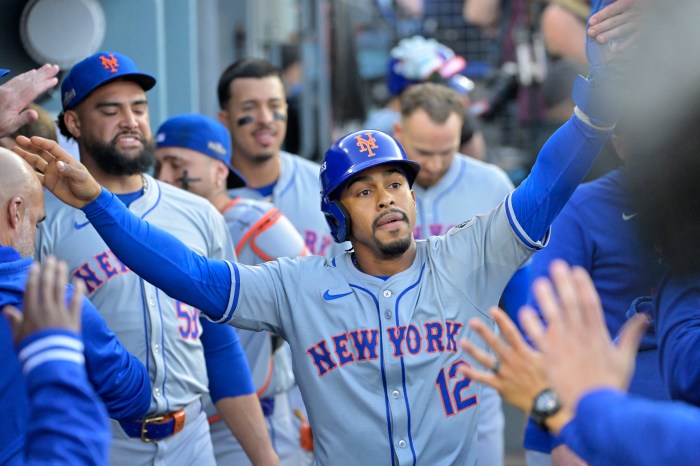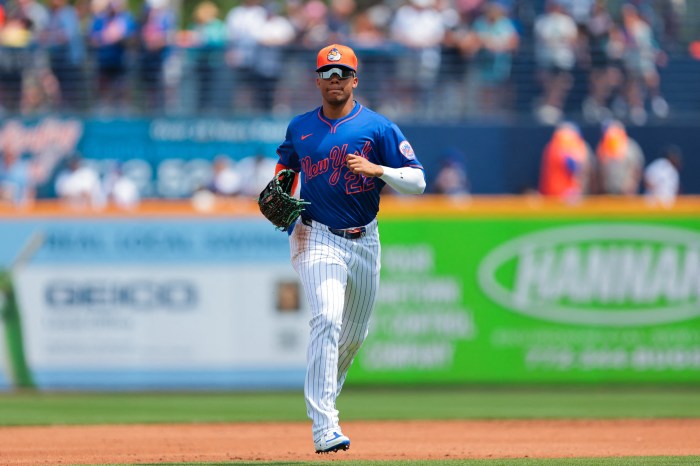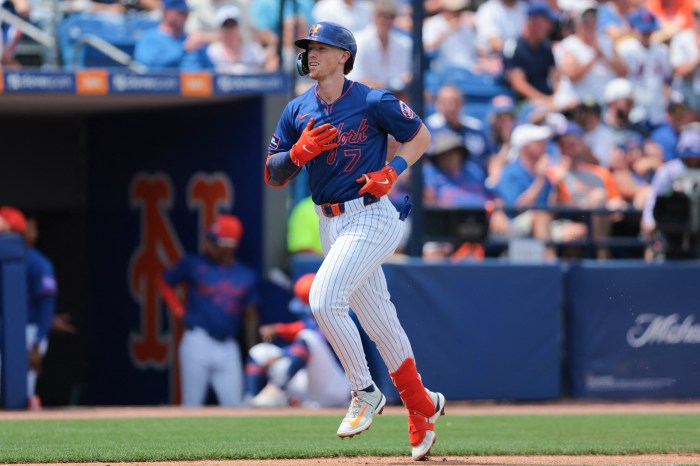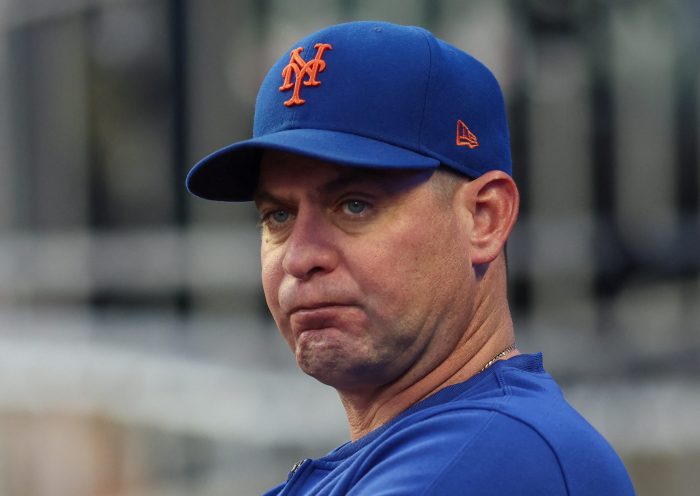QUEENS — Things haven’t necessarily gone to plan for Tylor Megill or the New York Mets — and that might not be a bad thing.
The right-handed starting pitcher filled in incredibly well for the then-injured Jacob deGrom last season when the Mets called on him to round out the bottom of their rotation, posting a 2.43 ERA over his first six starts. He rode a fastball that averaged 96 mph and would top 98, throwing it 57% of the time to set up a slider that averaged 85 mph and a changeup that came in at nearly 90 mph to build a strikeout rate of 25%.
But then he got hurt, suffering a shoulder injury in late May that limited him to just two more starts the rest of the season before returning late in the season as a reliever.
To maintain his health, Megill took “his foot off the gas” in an attempt to put less strain on it, meaning his velocities dipped in spring. Despite a strong showing, he was told he’d be the Opening Day starter in Triple-A.
But then things didn’t go to plan for the Mets.
Justin Verlander suffered a strained shoulder and Jose Quintana was shelved until at least July, forcing Showalter and the Mets to promote Megill back up to the majors — and he’s repaid them so far for their faith.
Megill has sported a 2.25 ERA over his first three starts of the season, including a five-inning run on Wednesday against the dangerous San Diego Padres in which he allowed a first-inning two-run home run to Juan Soto and nothing else the rest of the way, allowing just three hits with three strikeouts and three walks.
The 27-year-old is more reliant on creating weak contact rather than the strikeout as the percentage of punchouts has dropped by more than 3%. According to Baseball Savant, opposing batters have barreled just four of the 45 balls put in play against Megill as he’s pivoted from power pitching to that of a more finesse hurler that knows how to toe the line of aggression.
“He’s getting down the hill a little more athletically. He’s pulling more,” Mets manager Buck Showalter said. “He’s getting after it. Sometimes you can get a little too finesse when you just have to get after it.”
His fastball is nearly 3 mph slower than last year, his slider has dipped to 82 mph, his changeup is now sitting at 87 mph, and a curveball that once averaged 80 mph is barely touching 77.
With it comes more movement. His curveball has picked up nine inches of vertical drop compared to last year and his changeup has picked up nearly six inches while his fastball picked up two inches of horizontal movement. However, it’s not a byproduct of slowing things down.
“I’m just changing around with grips,” Megill said. “I wouldn’t say nothing’s really changed. My slider, I’m just trying to figure that out, make it a little tighter. With the changeup, I’m still doing what I did last year, it’s still firm.”
It’s been causing a litany of problems for those facing Megill. His hard-hit percentage has dropped by more than 10% since his debut season in 2021 while the average exit velocity and launch angle against him have also steadily dropped.
“I’m just staying with what I’ve been doing,” Megill added. “Now I’m just trying to perfect that.”
Whether it’s good enough to keep a consistent spot in the Mets’ rotation when Verlander returns later this month remains to be seen, but his start at least presents Mets manager Buck Showalter with a good problem — especially if things continue to not go to plan.
For more on Tylor Megill and the Mets, visit AMNY.com
Read more: Islanders Brace for Alex Romanov’s Injury


































